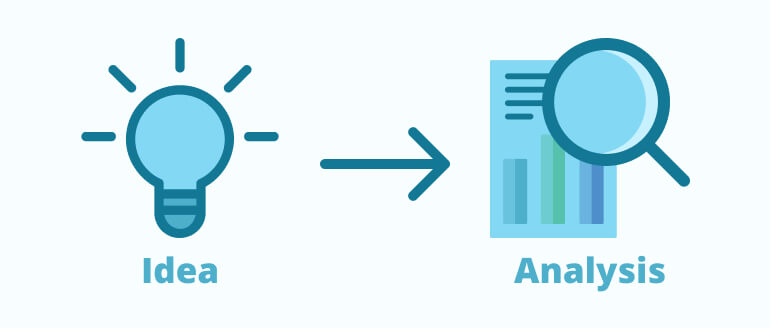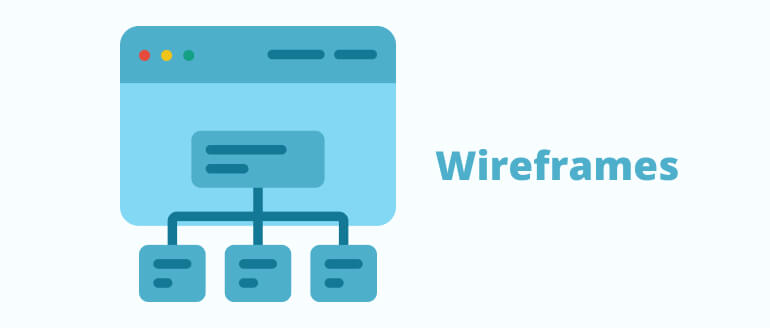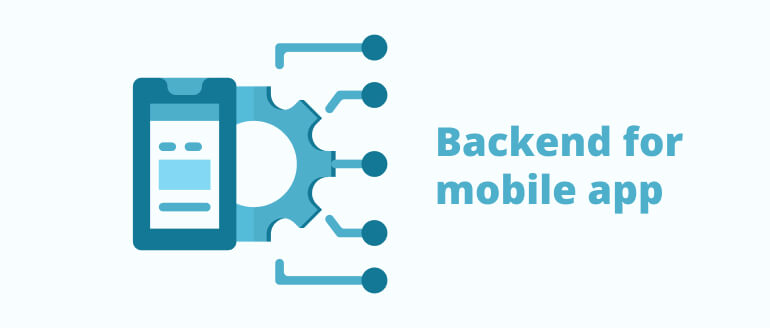Modern life is inconceivable without mobile apps. Order food, book a house with an ocean view halfway around the world, walk your beloved pet or learn a new language - anything you think of can be achieved in a few clicks on your smartphone. Businesses are adjusting to the new reality. Bill Gates once said: "If your business is not on the internet, then your business will be out of business." Nowadays, the same goes for mobile apps - if you're not available in the App Store or Google Play, you are no longer competitive.
Anyone with a brilliant idea should consider how difficult it might be to develop an app for it. Certainly, it's no rocket science, but the process is quite extensive and includes several important stages - from market analysis to niche selection, to development and post-design maintenance. This is the only way to create a mobile application that will meet your marketing goals, resonate with your target audience, and, thus, be viable and monetizable.
Let's have a closer look at the lifecycle and variants of mobile app development.
Market research

A new idea lies at the heart of everything that is created. But, before you build a mobile app, your idea should be validated. One of the most important stages is the analysis of the market and competitive environment. It turns guess-work into hard facts and tasks, laying a solid foundation for product future success. On top of that, by conducting market research, you can receive a comprehensive understanding of mobile app development. You will also consider the tiniest details that, when neglected, could cause loss of finances and time.
The initial analysis of mobile app ideas aims to find the market niche and determine product value. It includes the following factors:
- Market. Are you creating a new market or entering an existing one? What are the current economic characteristics, competitive environments, etc.? Do you aim to work locally or globally?
- Target audience. Describe demographics, geography, behavior patterns, and sore points for your potential clients.
- Competitive edge. Are there any similar apps on the market? If "yes," what are your distinguishing features? What value does it offer the user?
- .Mobility. How will the app work in its mobile version? How can you increase its significance for the user employing standard technologies - camera, location, etc.?
This is your groundwork. Once all points are cleared, you can conduct a thorough analysis of strategies, settling technical details, development options, time calculation, and creating your app development budget.
Establishing mobile app goals and objectives
Mobile app development is just a part of the whole project. We've already mentioned the notion of product value above. Now, let's go into detail on the importance of setting goals and tasks for your business.
At this stage, you should have a clear idea of what you truly want to achieve by developing your product. By understanding and prioritizing your goals, you can determine the functional properties and development methods you will use, outline your marketing strategy and metrics to measure your success, as well as become agile in your decision making.
Delve into the following questions to clarify the value your product will bring others:
- Does the app solve a specific problem? How effective is it? Keep in mind your final user at all stages, but don't forget about the value of this product for your company.
- For what app platform is it designed?
- How is this project related to your current activity? Do you want to supplement an existing website, help clients interact with your organization more simply and efficiently, or develop a totally new product?
- Do you intend free or paid usage? How will the app tackle monetization?
- Do you need to cooperate with other companies/projects to satisfy the needs of your target audience in every respect?
- Is the product scalable?
Ask yourself these and any other questions until you have a clear vision of the value your app can offer its users and your business. We suggest hiring a developer or app development company at this stage. With your goals and tasks in mind, experts can help you set priorities to create a design that will attract clients while implementing the necessary functions and content. They will also offer you the development option (native mobile app or app creator) most suitable for your business.
Wondering how to build
an exclusive software product for your business?
CONTACT USWireframes and storyboards

Having validated your idea, determined your goals, and dismissed any doubts concerning product value, you should proceed to the next stage - documenting and wireframe creation. Even though time is always a stumbling block, as people seem willing to develop an app as soon as possible, don't consider the prototyping hours wasted. Wireframes and storyboards that illustrate the connection between screens and navigation help discover usability problems in the early stages and allow for improving the user experience. They also help overcome technical constraints during backend development.
Wireframes and storyboards will clearly show how the offered functionalities make up a "ready-made" product. As a result, you will also be able to develop a functional app.
There are many DIY prototyping tools you can use on your own. Nevertheless, if you turn to a professional development team, you'll avoid unnecessary expenses and problems with app operability in the future.
Choosing backend for a mobile app

Even though many ideas look very appealing on paper, they may be challenging to implement for technical reasons. This is why changes to wireframes and storyboards are made all too often at this particular stage. The backend development process is intended to identify which technologies will be used in app development, concerning the platform (iOS, Android, Windows) and devices (tablets, smartphones, etc.). For example, when it comes to native apps, development for iOS and Android has different technical requirements and recommendations. You may also consult your technical team and consider the development of cross-platform apps, using existing app creators.
The product should have access to all required data. An open API or a custom-made abstract layer may be used for this end.
The outcome of this stage is an actual solution to store databases, servers, API, and other tools required to support the backend structure of your future product. Mobile Backend as a Service (BaaS) may be used as a simple solution to this problem.
Test of the prototype
Prototyping is one of the crucial stages of the mobile app development process. It combines UI and UX design to give you a sensory experience before the actual launch, letting you see how the product works. This will be a rough skeleton created in a compressed time frame, but it is essential for testing and feedback. It is better to entrust testing to those not involved in app development. This way, you will obtain the information necessary to evaluate your prototype and discover the specific version that could become the basis for your development.
Developing a mobile app

The development option you chose depends on app complexity, functions required, and the need for further scaling. If you go for an entirely custom process, you'll get a product made from scratch. This process can fully meet your needs and expectations in terms of functionality, technological solutions, and appearance. Using ready solutions for app building is more affordable, but involves restrictions. With that said, in some cases, tools are increasingly available and provide a worthy alternative to native development. A technical team can choose the option that will prove most effective for your short-term and long-term business goals while fitting your budget.
If you start an app development at the early stages of a working prototype, the process will include many phases and may vary significantly depending on the methodology applied. The choice is most often made in favor of the agile approach, which allows you to introduce changes, add functionalities, and launch new product versions as soon as possible.
Before starting the coding phase, an actual UI/UX design is prepared. Once that is in place, developers can concentrate fully on programming. Mobile application development is supported by continuous testing so that all errors are found and corrected immediately. The final version is additionally tested to ensure all elements of the system work seamlessly and trouble-free, and the product is ready for launch.
Wondering how to build
an exclusive software product for your business?
CONTACT USLaunch of the mobile app
Application deployment is closely connected both with marketing efforts and, even more so, with placing the ready product in the App Store and on Google Play. If you partner with a professional development team, rest assured the app will meet all technical requirements and criteria set by these platforms. Additionally, experienced experts will help you place your product on time and with ease. To distribute your app, you only need to prepare proper descriptions and titles that will explain the product's idea to users and serve the purpose of brand identity and brand recognition.
Support
Official release may be over, but the mobile app development lifecycle is not - it only begins at launch. Having interacted with your product, users will leave comments and share expectations. The world of technology will continue developing and your competitors will keep implementing their plans to capture the market. To stay competitive, it is crucial to support sustainable operation, add functions to help promote your app, and release regular updates.
Scaling is another factor requiring a technical team. Having successfully launched your app, received strong app analytics, and won a loyal target audience (or even brand advocates), any project starts growing both functionally and geographically.
So, once you decide to develop an app, make sure you have the necessary resources for both initial development and continuous support.